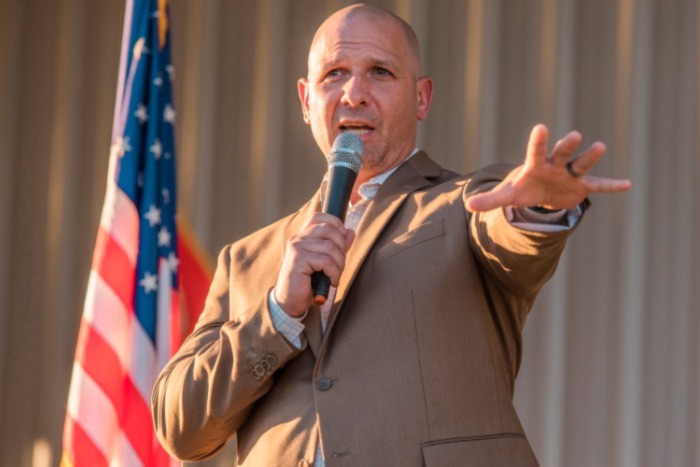
Growing up, many of us heard home ownership was an essential part of the ‘American Dream.” I still believe that to be true. It is part of a family’s retirement planning, security, and stability. Unfortunately, that ‘dream’ seems less and less attainable with interest rates on the rise, inflation out of control, housing inventory virtually nonexistent, and the cost of construction skyrocketing.
Despite the Legislature spending billions of dollars over the past decade on housing, Washington state’s housing shortage continues to grow. A report last year indicated Washington needed over 225,000 new housing units to meet current demand. A major contributing factor is government grinding construction to a halt with overregulation and the Legislature ‘spending’ funds on permanent-temporary housing rather than ‘investing’ funds in growing housing inventory and increasing home ownership.
On average, Washington zoning law account for $72,000 on the price of a new home and that continues to increase with new zoning and planning requirements. The median new home price is about $522,000 which means about 74% of Washington households can’t afford a new home. More than 2,500 families are priced out home ownership for every $1,000 added to the cost of a home.
What is the Legislature doing to help . . . or hurt residential construction and home ownership?
House Bill 1277 created a new law that added $100 to the document recording fee to pay for eviction prevention rental assistance. This is in addition to the $85.50 already being charged related to planning, homeless housing, and assistance surcharges. This additional cost contributes to the cost of purchasing a home.
Senate Bill 5042 created a new law that changes the vesting law so that now builders don’t know what law will apply when they go to build in specific situations. It can change from the time of site plan to the time of building. The uncertainty and costly delays produce situations where builders are less likely to invest in new projects and create much needed housing inventory.
Luckily, additional layers and costs were proposed but did not pass this year. For instance, House Bill 1099 would have added climate change mitigation and vehicle miles traveled as a planning goal; House Bill 1770 would have required all new building to be net-zero by 80% by 2034; and although the State Building Code Council keeps restricting the use of natural gas, House Bill 1084 would have unnecessarily eliminated natural gas in new residential and commercial construction.
All of these proposals would increase the cost of home ownership and increase the cost of housing generally as we price out working families from the dream of home ownership and financial independence.
On the other hand, House Bill 2001 created a new law that allows tiny house communities to be part of an affordable housing incentive program under the Growth Management Act, increasing the use of alternative dwelling units, and incentives for first-time home buyers are all moves int the right direction.
As the assistant ranking member on the House Capital Budget Committee, the 2021-23 capital budget invested more in home ownership, infrastructure, and home security. The budget included $10 million for weatherization grants to assist homeowners with upgrades to reduce heat loss; $10 million for the continuing affordability in current housing program to ensure affordable housing stays affordable; and $5 million for the rural rehabilitation loan program that provides deferred loans to rural, low-income households that need necessary repairs and improvements to their homes. I am also proud to also say that funds were allocated in the past two Capital Budgets specifically for rural infrastructure to help with affordable housing creation.
Many communities in Southwest Washington have aging infrastructure. My family lives in a 102 year-old home in Centralia and I know first-hand the cost and headaches of aging infrastructure. Sewer and water improvements are expensive for homeowners and city-wide improvements are unlikely without state or federal assistance.
For too long, the Legislature has ignored the fact that our communities need infrastructure like sewer and water first, in order to build housing inventory, protect our critical aquifer and waterways, and reach our full economic potential. Luckily, there were some good investments made in the past two years that recognize rural communities and reverse the course of Puget Sound centric investments.
I believe to improve housing inventory and help families achieve their dream of home ownership, we must act to help expedite the permitting process, reduce overburdensome and redundant planning processes, identify and address State Building Code Council updates that unnecessarily increases the cost of building homes, and consider changes to land use polices within urban growth areas. The Legislature must also resist ‘raiding’ funds dedicated to improving rural infrastructure by supporting and investing in the Public Works Board and Community Economic Revitalization Board.
The upcoming session will have a lot of opportunities to address housing inventory and home ownership. I will continue to advocate for rural communities impacted by lack of housing inventory and the influx of new residents. Smart investments and proper planning tools will help communities maintain their rural charm, improve their historic downtowns, and grow to meet the economic, housing, and quality of life needs of its citizens.



